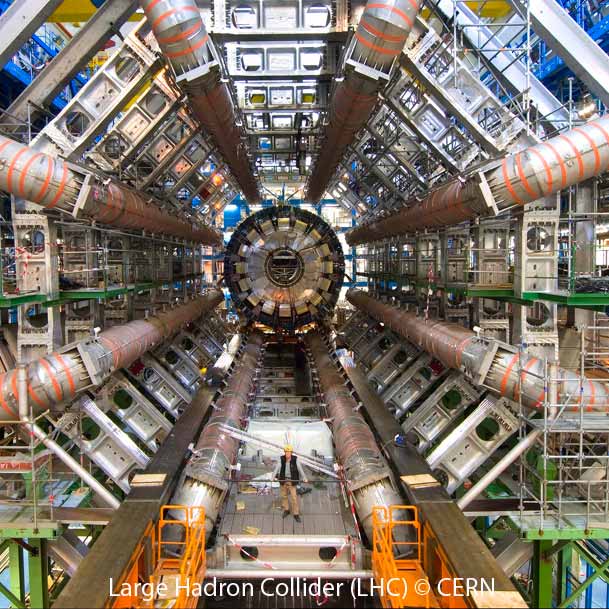Lancaster physicists respond to Higgs discovery

Lancaster physicists joined scientists from around the globe in Melbourne and Geneva this morning (July 4) to hear the long-awaited news that it seems the hunt for the elusive Higgs boson is over.
At a seminar held at CERN, the European Particle Physics Laboratory, the ATLAS and CMS experiments presented their latest results in the search for the Higgs particle. Both experiments see strong indications for the presence of a new particle in the mass region around 125 - 126 GeV giving scientists strong evidence that they have finally found the Higgs.
Physicists have been working for years to find clear evidence proving or disproving the existence of the particle which, according the Standard Model, must exist if we are to be able to explain how things have mass.
Lancaster physicists have played a significant part in the hunt for the Higgs - work which has spanned decades.
The latest findings from the world’s largest scientific experiment – the Large Hadron Collider (LHC) –mark a significant breakthrough in our understanding of the fundamental laws that govern the Universe. The next step will be to determine the precise nature of the particle and its significance for our understanding of the universe.
Lancaster physicists Dr Harald Fox and Katy Grimm were at CERN for the announcement; meanwhile Professor Roger Jones was at the International Conference on High Energy Physics at Melbourne.
See YouTube video as Lancaster High Energy Particle Physicist Professor Roger Jones explains the significance of the discovery
CERN Director General Rolf Heuer said: “We have reached a milestone in our understanding of nature. The observation of a particle consistent with the Higgs boson opens the way to more detailed studies, requiring larger statistics, which will pin down the new particle’s properties, and is likely to shed light on other mysteries of our universe.”
Speaking from CERN, Lancaster’s Dr Harald Fox said: “This is a really amazing result. The standard model is nearing completion, if there is such a thing, after being a work-in-progress for about 40 years. This discovery is right up there together with the discovery of the W and Z bosons. For my generation of particle physicists this is a once-in-a-lifetime moment, truly exceptional.”
Katy Grimm said: “This is a great week for physics: Evidence of the Higgs boson is seen by the ATLAS experiment, and by the CMS experiment, and supported by the Tevatron in Chicago. These complimentary results come from a global coordinated effort in particle physics-- and indeed even Lancaster's own particle physics group includes English, Welsh, German, Georgian, Bulgarian, Slovak, Russian, Australian, New Zealander, and (with me) American physicists among others. In the coming year we will look to see whether this particle has all of the properties predicted by the Standard Model. Exciting times today and more ahead.”
From Melbourne, Professor Roger Jones said: “This is not the end of the Higgs story, but finally seeing a new particle that, at first observation, has the right properties to be the Higgs is a very big moment. This search was already going on when I started my PhD in 1983. We should pay tribute to the many people in many places who searched without being lucky enough to find it. We should also thank than many people who have made this possible – building the accelerator, the detectors and the world-wide computing system that let us analyse vast amounts of data within a week of it being recorded.
“Now the real, fun work begins – we need to see it decays in all the right ways and at the right rate to be a Higgs. Lancaster is particularly looking at its decays to a particle called the tau, which is a big sister to the electron. We may have found a single ‘fundamental’ Higgs; but it could be the first of a family, or it could even be something more exotic that manages to act like a Higgs. Also, given the new particle’s mass (loosely, it’s ‘weight’), there are strong beliefs that we need additional, as yet unobserved physics -and particles- to make the stable world we live in. Our work in supersymmetry and the physics of B-quarks may reveal that.
“And there are the other questions we are still working on at the LHC. What made the antimatter in the early universe largely disappear? What is the nature of the Dark Matter that makes up a large part of the Universe? The game is still just beginning.”
For more information about the LHC at CERN click here